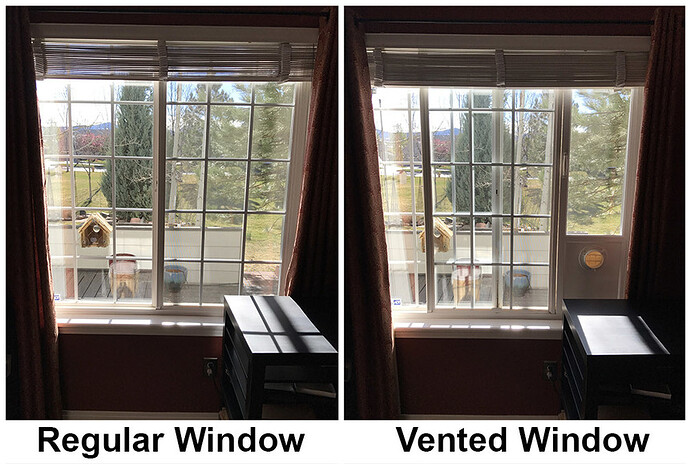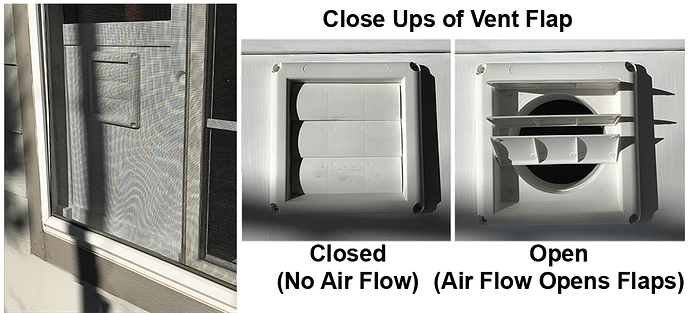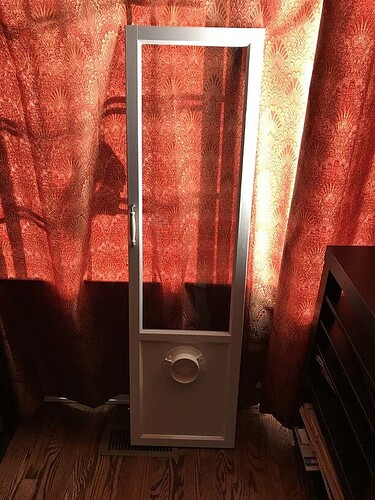In anticipation/hope that my Glowforge (expected to be named Lazy) will arriving “early”, I have been getting my setup fully ready to go.
I already wrote a post about My Glowforge Table. This post is about my newly complete venting setup.
A few important items for context:
-
My Glowforge will live in my home office, which is on the main floor. It does NOT have a dryer vent built into the wall. It does have a horizontally sliding window and a nice view.
-
My house has rules regarding things that are ugly, even if they are functional. In short, they are not allowed.
Result:
Total cost: around $25
How did I do it?
You should already know from My Glowforge Table post that I love hacking IKEA products. So, I purchased an OXBERG Black-Brown Glass Paneled Cabinet Door from IKEA’s “as is department” for $9.99
It is usually $50 and nothing was wrong with it, so this was a great deal. I almost payed the extra $40 for the off the shelf white version so that I wouldn’t have to paint the final result. In retrospect, I totally should have. I spent way too much time painting it white!
Anyway, the cabinet door was way too tall for my window, so I took it apart, cut it to length and then put it back together. At that point, it looked like it did before, but shorter.
I saw Marmak3261’s post a while back about a quick disconnect vent hose coupler and thought the concept was a great idea. In this case, I will likely want to install/uninstall my window vent panel often. Having it detach from the dryer hose would make that much easier.
I chose to execute Marmak’s design using stock parts. I chose the Dryer Dock, which you can see here:

For the back side of the Dryer Dock, I used a “siding vent”. I chose a siding vent because my window has a mesh screen that I don’t want to take out. After all, I’m not a fan of bugs inside my house.
Siding vents tend to be lower profile than other types of exhaust vents, so it fits in front of my existing screen no problem. One important thing to note is that siding vents stay closed whenever air isn’t flowing through it going OUT. Therefore, it prevents cold air coming through the vent and inside my house during the winter and hot air during the summer.
Note: I had to heavily modify the siding vent and the Dryer Dock so that they would fit together properly and be 100% sealed against each other and my window vent panel.
If you want to see what the final panel looks like by itself, you can see it here:
Oh yeah, I did add a handle to make putting the panel in place a whole lot easier.
I think that covers everything.
Now all I need is the Glowforge Pro that I ordered OR a pre-release unit…
Jason






 …full blush again…these thing’s don’t happen when I’m not sleep deprived…
…full blush again…these thing’s don’t happen when I’m not sleep deprived…
